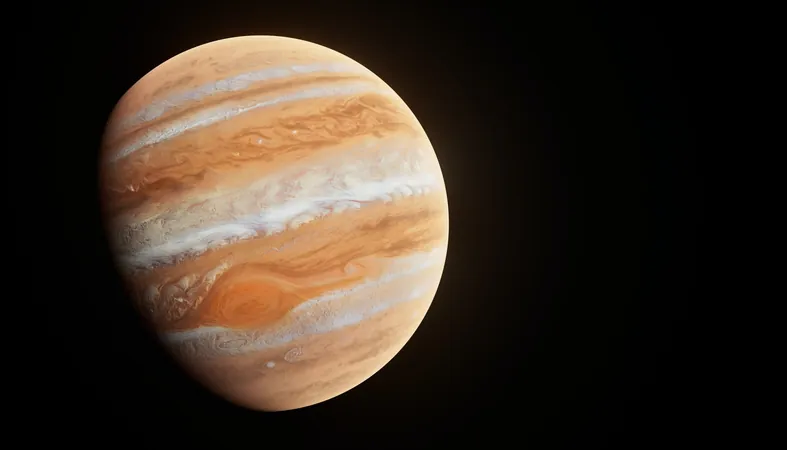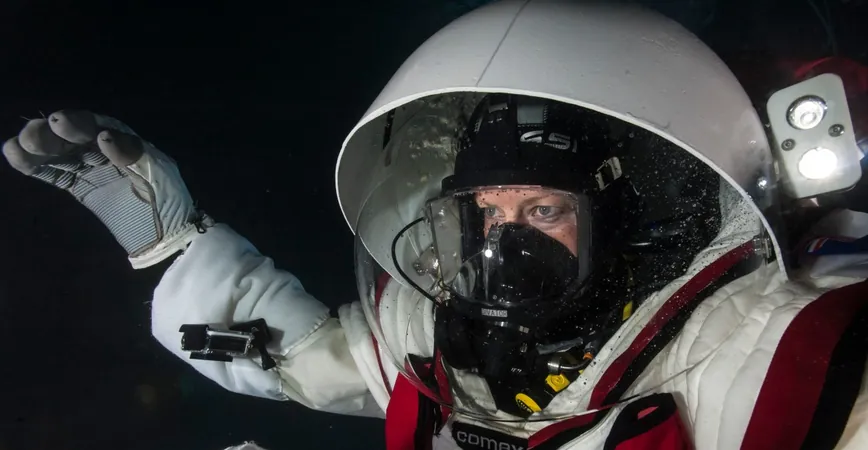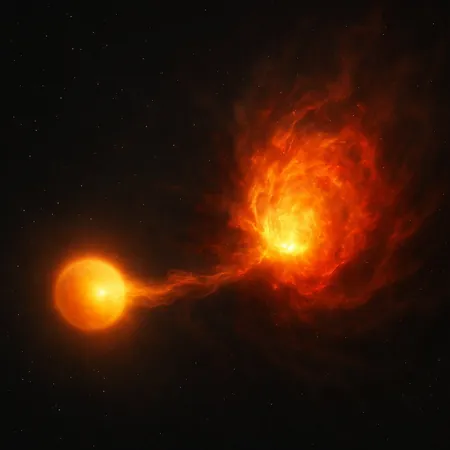
Discovering Alien Auroras: New Plasma Waves Found in Jupiter's Mystical Atmosphere
2025-08-24
Author: Liam
A Cosmic Revelation: Jupiter's Unique Plasma Waves
In a groundbreaking study, researchers from the University of Minnesota Twin Cities have identified an unprecedented type of plasma wave within Jupiter's spectacular auroras. This pivotal discovery not only enhances our understanding of the alien auroras found on distant planets but also deepens our insight into the protective function of Earth's magnetic field against the sun's dangerous radiation.
Juno's Historic Mission: A First in Space Exploration
The remarkable findings stem from observations made by NASA's Juno spacecraft, which executed a historic low-orbit flyby over Jupiter’s north pole. Thanks to this unique vantage point, scientists were able to dive into data from the planet's northern polar regions for the first time ever. The detailed research has been published in the esteemed journal, Physical Review Letters.
Ali Sulaiman, an assistant professor at the University of Minnesota School of Physics and Astronomy, stated, "While the James Webb Space Telescope has captured stunning infrared images of Jupiter's aurora, Juno is the only spacecraft to have successfully orbited the planet's poles."
The Mysteries of Plasma: Unlocking Jupiter's Secrets
Surrounding magnetized planets like Jupiter lies a sea of plasma—a superheated state of matter where atoms fragment into electrons and ions. These particles accelerate toward the planet's atmosphere, igniting the auroras we often associate with breathtaking green and blue lights on Earth. However, Jupiter's auroras remain elusive, detectable only through advanced UV and infrared instruments.
A New Frequency Spectrum: Jupiter's Polar Plasma Waves
The research highlights that the unusual low density of Jupiter's polar plasma, combined with the strength of its magnetic field, produces low-frequency plasma waves that differ starkly from anything encountered on Earth. Robert Lysak, a physics professor and plasma dynamics expert at the University of Minnesota, remarked, "While plasma can behave like a fluid, it is significantly swayed by both its internal and external magnetic influences."
Understanding the Dance of Particles: Jupiter vs. Earth
This study provides essential insights into how Jupiter’s complex magnetic field facilitates the influx of particles to its polar caps, a stark contrast to Earth where auroras typically form a circular pattern around the poles. As Juno continues its mission, the research team is eager to gather more data to explore this newly discovered plasma wave phenomenon.
The Collaborative Effort: A Team of Experts
The research team comprises not only Sulaiman and Lysak but also Sadie Elliott from the School of Physics and Astronomy, alongside colleagues from the University of Iowa and the Southwest Research Institute. This collaboration aims to unlock further details about the enigmatic phenomena shaping our solar system.









 Brasil (PT)
Brasil (PT)
 Canada (EN)
Canada (EN)
 Chile (ES)
Chile (ES)
 Česko (CS)
Česko (CS)
 대한민국 (KO)
대한민국 (KO)
 España (ES)
España (ES)
 France (FR)
France (FR)
 Hong Kong (EN)
Hong Kong (EN)
 Italia (IT)
Italia (IT)
 日本 (JA)
日本 (JA)
 Magyarország (HU)
Magyarország (HU)
 Norge (NO)
Norge (NO)
 Polska (PL)
Polska (PL)
 Schweiz (DE)
Schweiz (DE)
 Singapore (EN)
Singapore (EN)
 Sverige (SV)
Sverige (SV)
 Suomi (FI)
Suomi (FI)
 Türkiye (TR)
Türkiye (TR)
 الإمارات العربية المتحدة (AR)
الإمارات العربية المتحدة (AR)